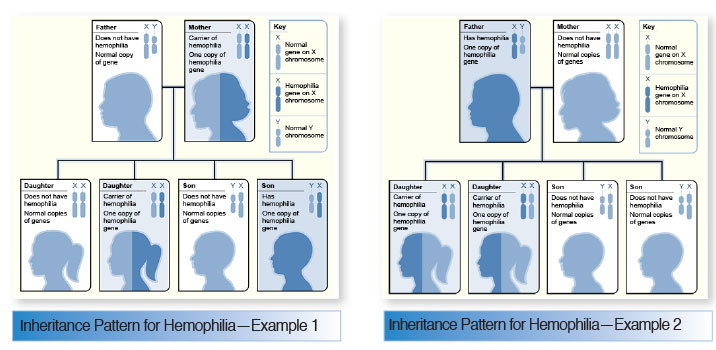Specialty Pharmacy
Hemophilia
What is a bleeding disorder?
A bleeding disorder is present when the blood does not clot properly. Blood clotting is a complex process that involves as many as 20 different plasma proteins. All clotting proteins and platelets need to work effectively and in the correct order to form a proper clot that is strong enough to stop bleeding. A bleeding disorder occurs when the body is unable to activate the entire clotting cascade correctly.
Our Hemophilia Management Program
We have spent many years developing the management, processes, and clinical capabilities that ensure that all of our bleeding disorder patients can obtain and properly use the medications that have been prescribed to them. The vast knowledge base that our staff has compiled in all components of treating Hemophilia is what sets us apart.
- Comprehensive educational materials and resources on bleeding disorders and all of the medications that treat them
- Help patients to understand the complex treatment protocols ordered by their physicians
- Monitor patients adherence to their prescribed treatment plan
- Monthly assessments and assistance with infusion logs
- Counsel patients one-on-one to identify barriers to adherence and reduction of side effects
- Coordinate the dissemination of information among all members of the patient’s care team
- Manage the handling, storage and distribution of each medication
- 24/7 telephone access to pharmacists and nurses
- Every patient has a dedicated Patient Care Coordinator who will assist them with all components of their care and coordinate delivery of their medication
The clotting cascade
Blood vessels constrict – When an injury occurs, the blood vessel at the site of injury contracts to limit the flow of blood to the damaged area.
Platelet plug forms – Within seconds of the injury occurring, small cells found in the blood, called platelets, spread on top of the injured vessel and release chemical signals to attract other cells circulating in the blood. Some of the cells attracted are clotting factors. The first factor to be activated during the clotting cascade is the von Willebrand factor. The vWf is a glue-like protein that forms a plug that prevents blood from flowing to the site of injury.
If any of the steps in the clotting cascade don’t work properly or are deficient, the person bleeds longer and, therefore, has a bleeding disorder. The type and severity of the disorder is determined based on the protein that is missing from the blood and how much of it is missing.
What is Hemophilia?
Hemophilia is a rare bleeding disorder classified by abnormal blood clotting or the absence of blood clotting. It ranges from mild to severe, and if not properly treated can be very dangerous to those with the disease, as undetected internal bleeding and bleeding in the joints can damage organs and tissues.
Hemophilia is very rare. Only about 20,000 Americans have the disorder. It affects mostly males, as it is an X chromosome linked condition. However, under rare and specific circumstances it can occur in a female. Hemophilia affects 1 in 5,000 male births in the US, approximately 400 babies are born with hemophilia each year. All races and economic groups are affected equally. People who have hemophilia and access to factor replacement therapy have a normal life expectancy.
The different types of Hemophilia
Bleeding disorders are treated by determining what protein is missing in the blood. Hemophilia is the most common and is classified as such:
Hemophilia A
Occurs when factor VIII levels are deficient. Also known as “classic hemophilia.”
Hemophilia B
Occurs when factor IX levels are deficient. Also known as “Christmas disease.”
Hemophilia C
Occurs when factor XI levels are deficient.
Causes of Hemophilia
Most hemophiliacs are born with the disorder. It is caused by a defect in one of the genes that determines how the body produces clotting factor. The gene that determines clotting factor production is located on the X chromosome, which is why it’s so rare for a female to be born with hemophilia. She would have to have the defective gene in both chromosomes. If it is only on one, she is considered a hemophilia carrier. This means she may pass it on to her offspring but may not develop symptoms herself.

Source: National Heart, Lung, and Blood Institute, National Institutes of Health.
Signs & Symptoms
A person with hemophilia can bleed internally or outside the body. People with hemophilia do not bleed more than people without hemophilia, they just bleed longer. The most common types of bleeds are into the joints and muscles.
- Bleeding in the kidneys or bladder, leading to blood in the urine.
- Bleeding in the intestines or stomach, leading to blood in the stool.
- Bleeding in the large muscles of the body, leading to large bruises.
- Bleeding in the joints, leading to joint tightness, swelling, and pain.
- Bleeding in the brain, leading to headaches, neck pain, vomiting, changes in behavior and agility, double vision, or seizures. Brain bleeds are very serious and very dangerous.
- Bleeding in the mouth from gum abrasion, cuts, bites, or losing a tooth.
- Unexplained nosebleeds.
- Heavy and excessive bleeding from small or minor breaks in the skin.
- Bleeding that starts and stops for a longer period of time than expected.
